You can contact LEARNZ, part of CORE Education, at:
Postal Address:
PO Box 13 678,
Christchurch 8141,
New Zealand
Kia ora koutou,
After your late arrival in Pureora last night it was a challenge to respond to the alarm at 5.30am. The enthusiasm of the ambassadors helped to keep you on task and ready to hunt for kōkako.
Dave Bryden is a conservation ecologist who has spent years studying perching birds like kōkako. He has caught many birds and he wanted to share the catch and release process with you. Dave and Amanda had already chosen a forest site and wanted to be there before first light to set up a mist net. So, with headtorches on you braved the dark forest to walk to the site. You were joined by volunteers from the Pirongia Te Aroaro o Kahu Restoration Society and everyone followed Dave in silence to avoid disturbing the birds. It was eerie walking through the dripping wet undergrowth of the forest in the dark. You could hear the screech of kaka and the squelch of mud as you wandered down the track.
Before long, you arrived at Dave’s site and had to be careful to avoid the lines that had been set between the trees for the net to hang on. Everyone set to work to untangle the net and raise it like a sail. Amanda and Clare set up speakers on either side of the net to call kōkako in. Dave had recorded the calls of kōkako in this area. These calls will be played to try and lure the birds into the net. Kōkako are very territorial and will often respond to kōkako calls in their area because they want to chase away any other birds from their territory. Once the net and speakers were in place you found a quiet spot to sit and wait. Dave played the kōkako recording and it didn’t take long to hear kōkako calling in response. Volunteers helped entice the kōkako by gently shaking trees to mimic the movement of birds. Slowly the haunting song of kōkako got closer and closer. Eventually you spotted a pair of kōkako in the trees above. The birds seemed curious and came closer. One kōkako glided straight into the net and with a bit of team work the net was quickly lowered and the bird captured. I was surprised at how quickly we had managed to capture such a rare bird.
Once the kōkako had been freed from the net it was put in a black bag to keep it calm before it was weighed and given a health check. Dave and the team then reset the net to try and catch the other kōkako. It took a little longer this time, but eventually the second kōkako was also captured. The restoration society managed to translocate (move) 20 kōkako from Pureora to Mount Pirongia last year and this year they have a permit to translocate 10 more birds. Because Pureora Forest has a healthy population of kōkako some birds can be safely moved to help create new populations in areas where pests have been removed. It has taken twenty years of hard work to restore Mount Pirongia and make it a suitable place for kōkako to come back to. It was such a great feeling to be involved in bringing kōkako back to an area where they used to thrive.
Before these birds could be taken to their new home they were carefully checked to make sure they were healthy. It looked like one bird was male and the other female. It’s difficult to tell the difference but male kōkako tend to be larger with longer legs and wings. Each bird was banded. Different colours are used to show where the bird is from, and when it was caught. A unique code on a metal band is added so individual birds can be identified and monitored. You can watch the video to see how the birds are checked and banded. Once the birds had been banded they were rewarded with food. I was surprised to see the kōkako nibbling on a banana. Wild kōkako don’t know what a banana is but after a little taste test they seemed keen for more.
The kōkako were then placed carefully into boxes lined with moss and eatable plants and gently carried out to the carpark ready for their journey to Mount Pirongia. Dave drove carefully to reduce the stress on the birds and it took two hours to get to Pirongia. The birds were then carried into the forest and released. It was amazing to see the birds fly from the boxes and quickly disappear into their new forest home. Hopefully these birds will breed and help create a new population of kōkako. We often hear about the decline in the number of native birds, so it was fantastic to be involved in a project which is helping to bring birdsong back to the forest. You finished the day with a web conference where Ilam School and Korokoro School asked some interesting questions. You can listen to a recording of this web conference.
Tomorrow you will see how people have worked together to bring kōkako back to Pirongia and find out how you too can help restore your local environment.
See you then,
Shelley the LEARNZ field trip teacher.
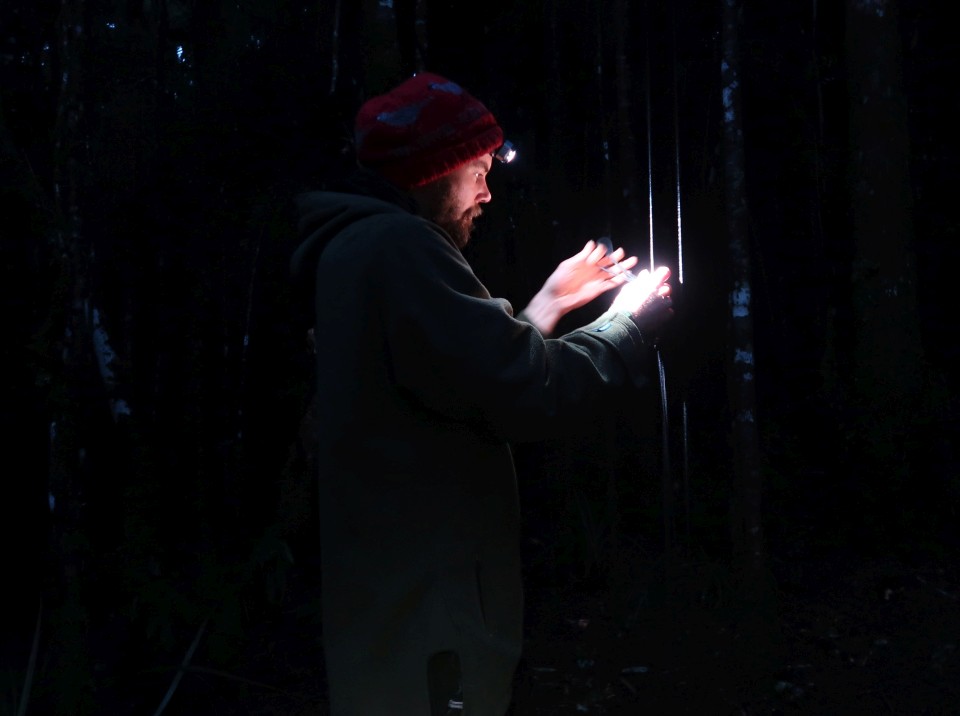
Dave sets up a mist net in the dark this morning so he can attempt to catch kōkako. Image: LEARNZ.
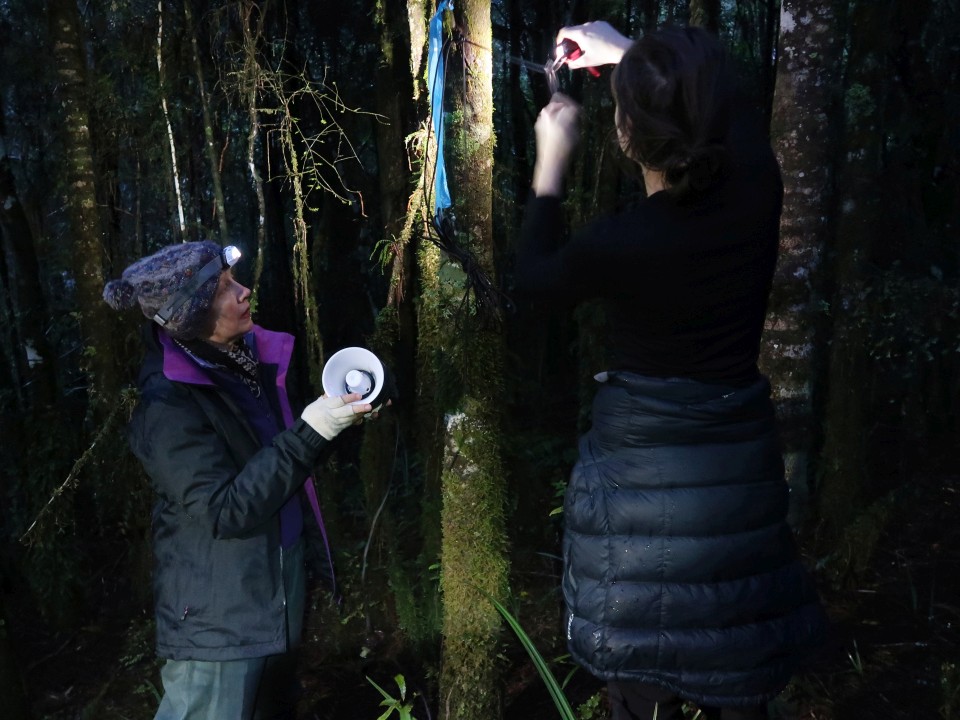
Clare and Amanda start rigging up a speaker, which will play recorded kōkako calls to lure kōkako into the mist net. Why are kōkako attracted by hearing their own call? Image: LEARNZ.
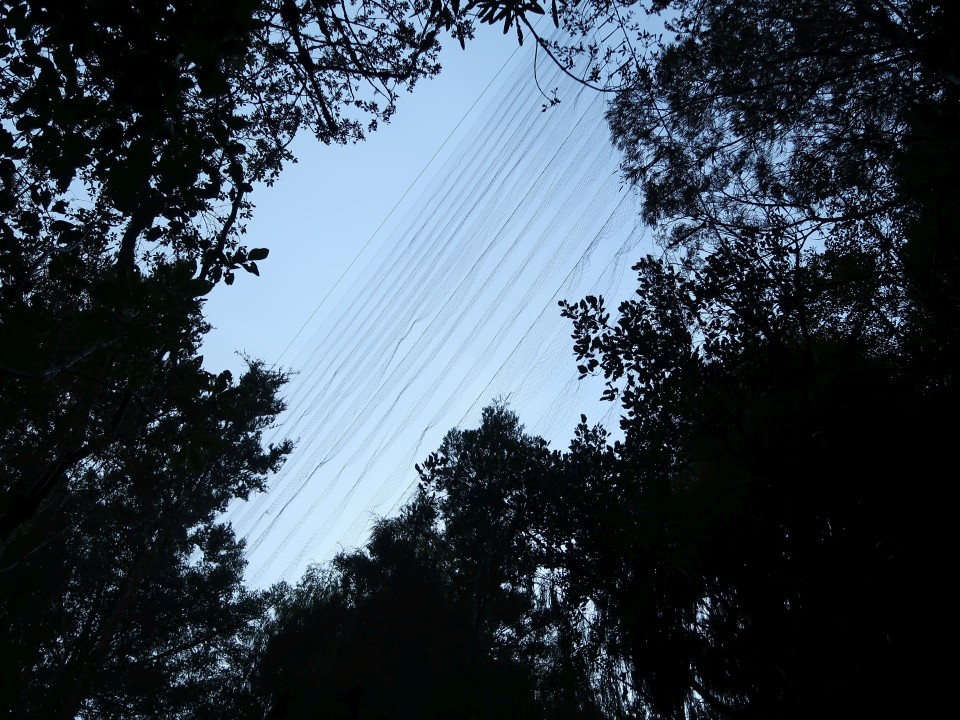
The mist net is set between tall trees to try and catch kōkako. Image: LEARNZ.
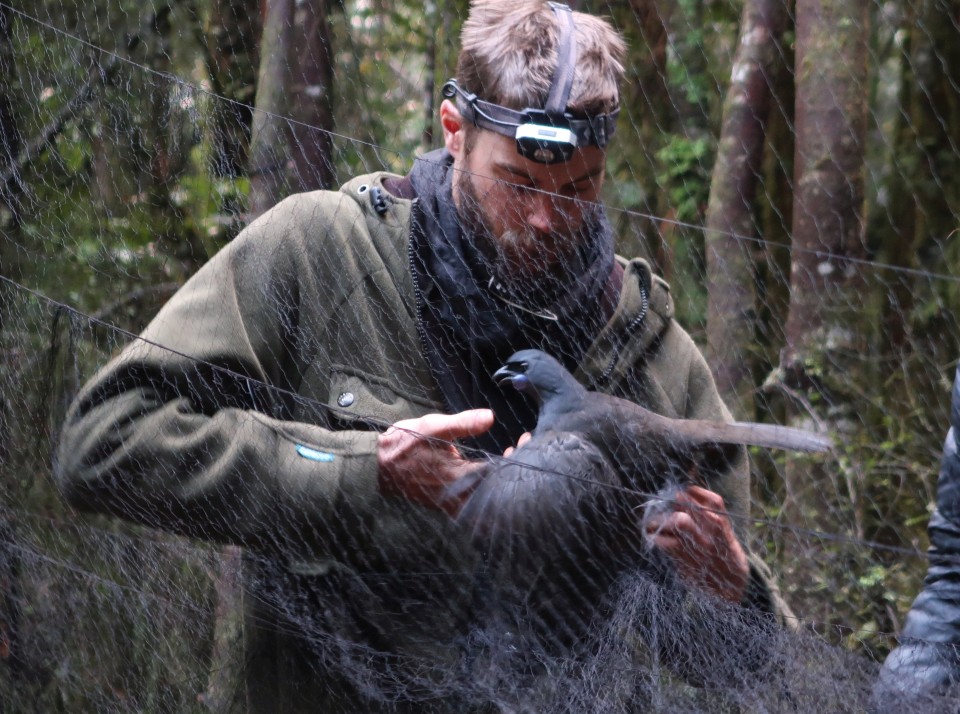
Dave carefully frees a kōkako from the mist net so he can give it a health check and translocate it to Pirongia. Image: LEARNZ.
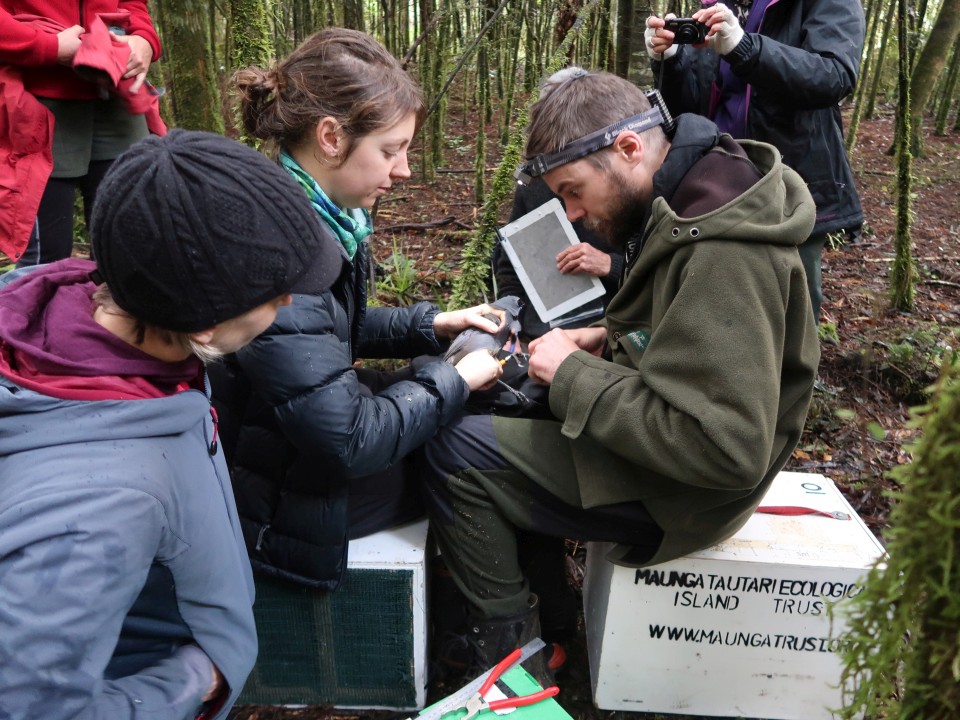
Shelley looks on as Amanda and Dave check the health of a kōkako and band it. Why are birds banded? Image: LEARNZ.
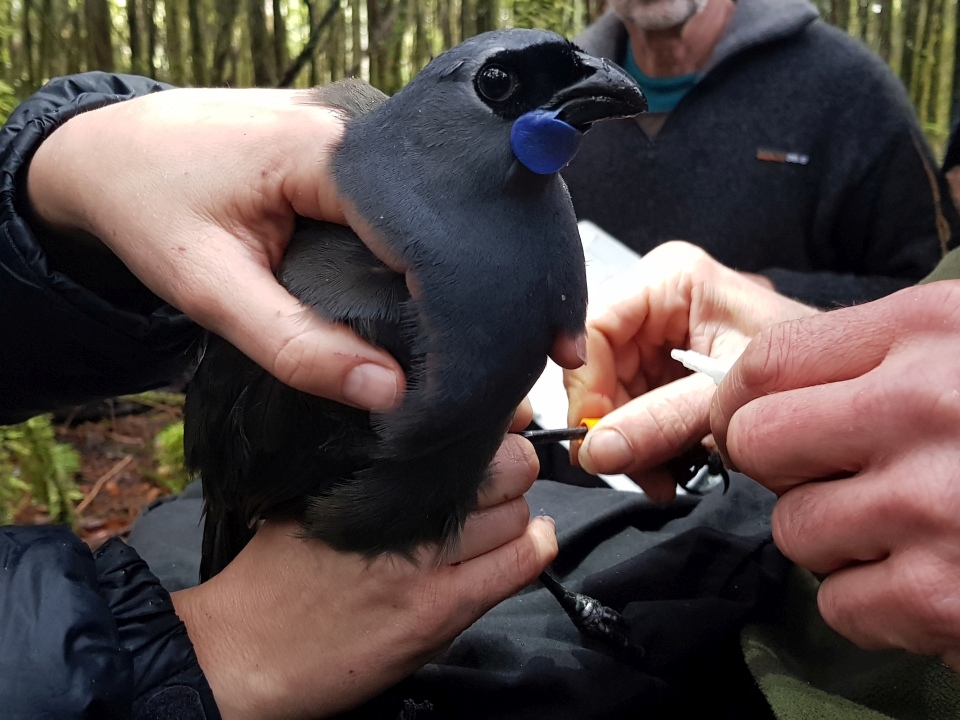
A band is secured shut with super glue so that the bird can be identified and monitored. Dave has to be careful not to get glue on the bird or himself! Image: LEARNZ.
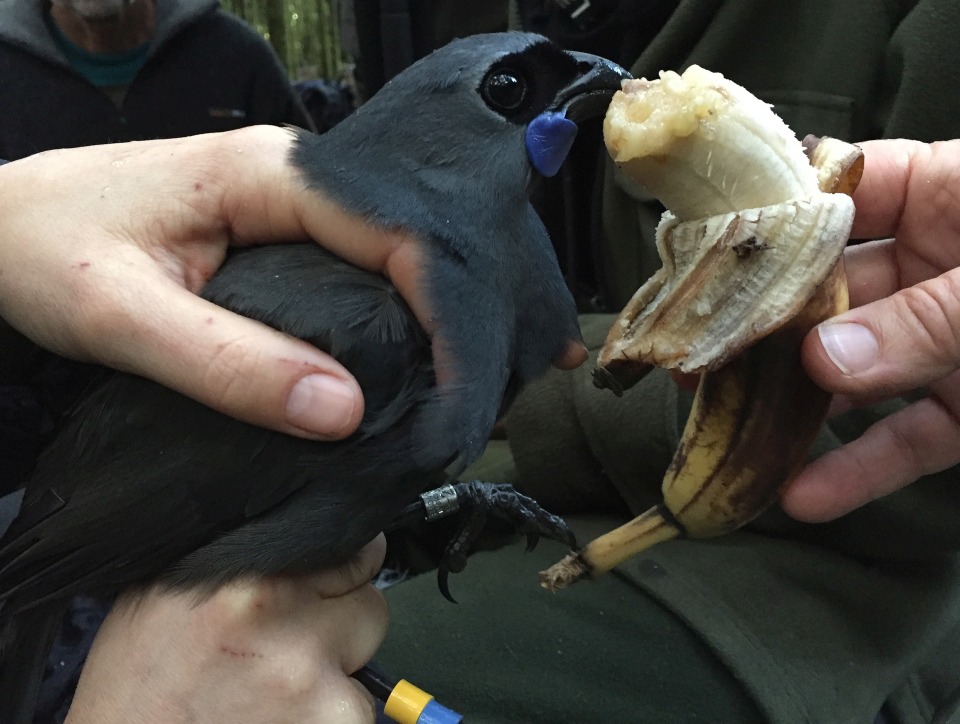
A kōkako gets his first taste of banana. Why do you think they are fed banana? Image: LEARNZ.
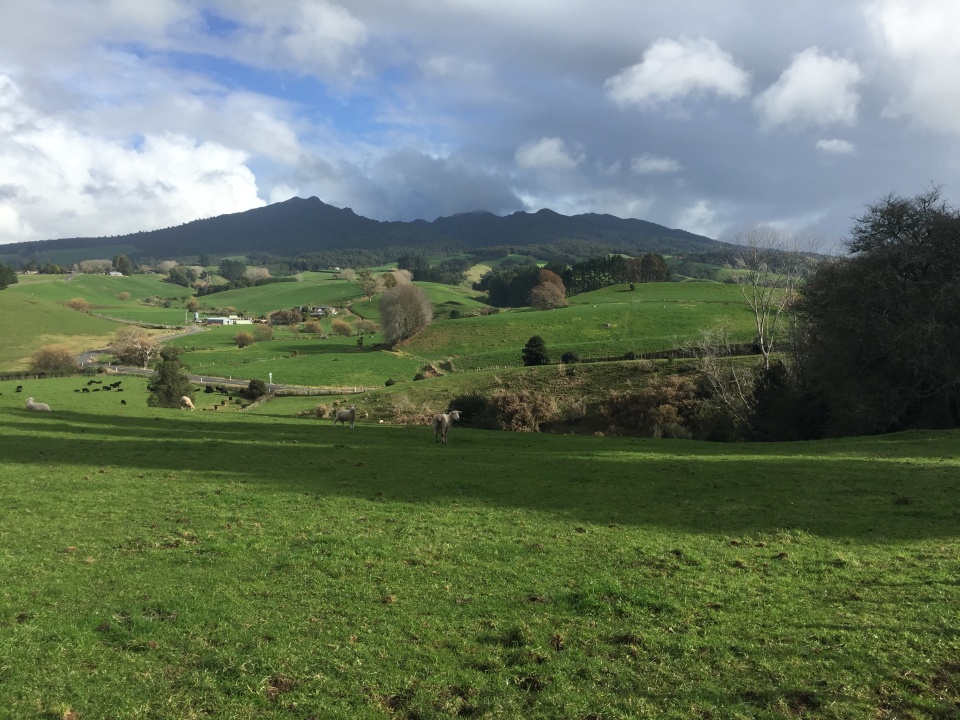
This is Mount Pirongia where the two kōkako we caught today will be released. Image: LEARNZ.
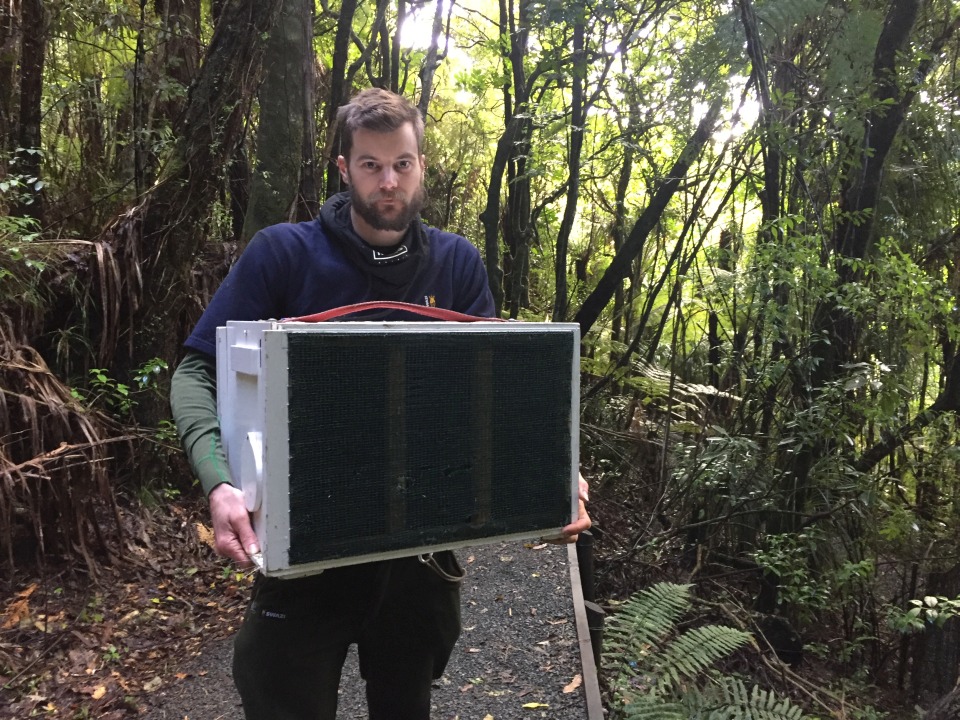
Dave carries one of the kōkako into the forest on Mount Pirongia where it will be released. Image: LEARNZ.
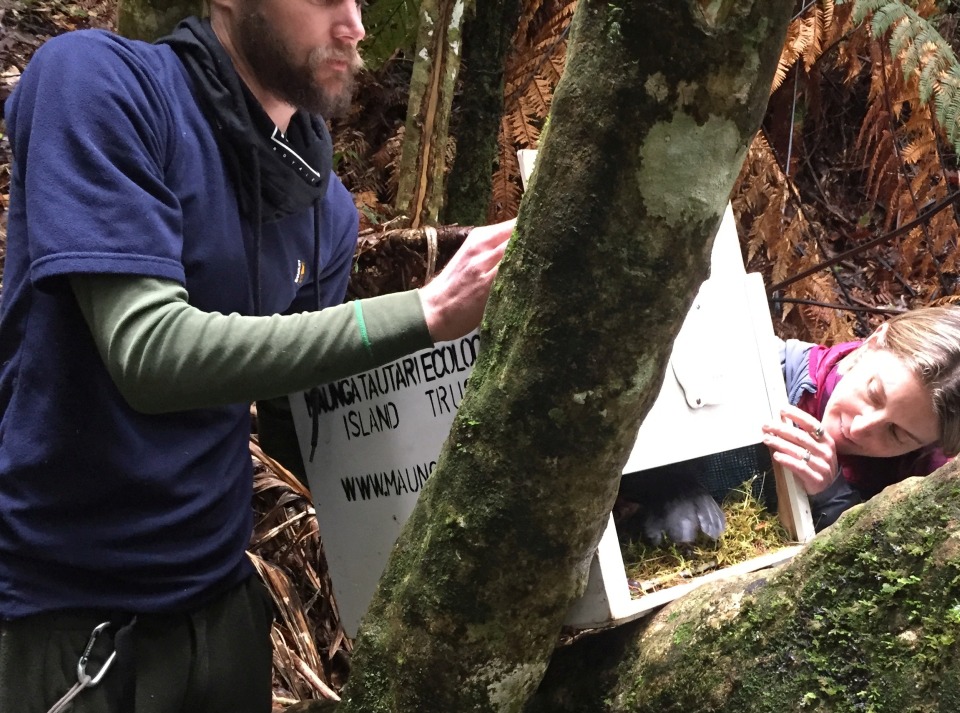
Dave and Shelley release a kōkako on Mount Pirongia. Why are these birds being translocated from Pureora to Pirongia? Image: LEARNZ.
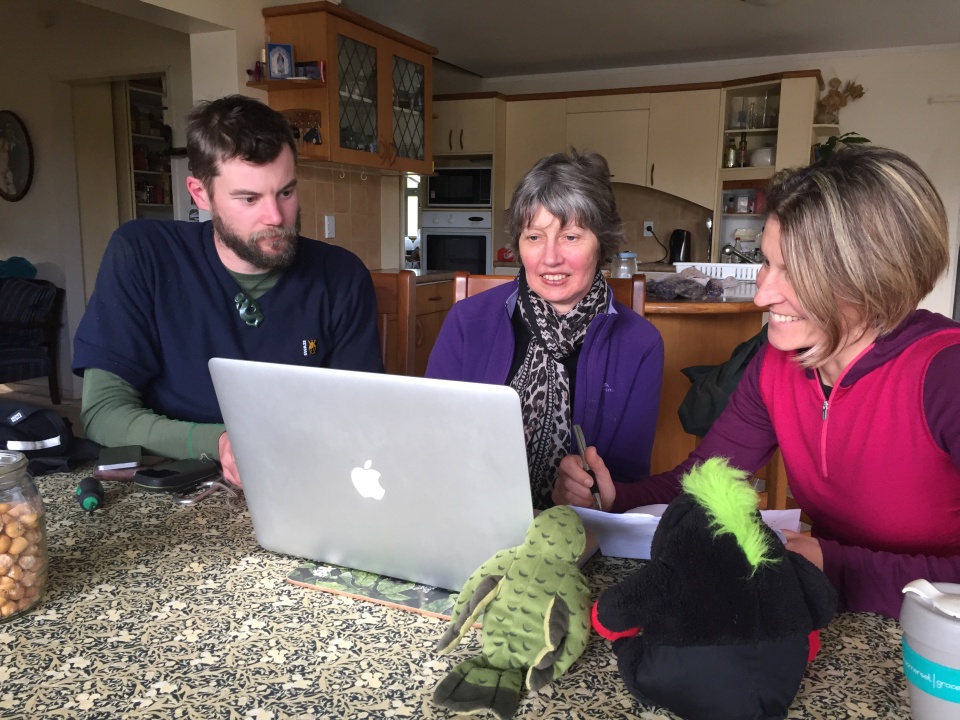
Dave, Clare and Shelley talk to students from Ilam School and Korokoro School during the web conference. Image: LEARNZ.